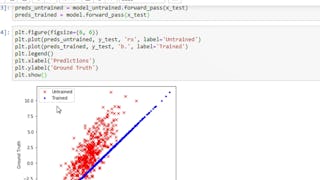Case Study - Predicting Housing Prices
In our first case study, predicting house prices, you will create models that predict a continuous value (price) from input features (square footage, number of bedrooms and bathrooms,...). This is just one of the many places where regression can be applied. Other applications range from predicting health outcomes in medicine, stock prices in finance, and power usage in high-performance computing, to analyzing which regulators are important for gene expression. In this course, you will explore regularized linear regression models for the task of prediction and feature selection. You will be able to handle very large sets of features and select between models of various complexity. You will also analyze the impact of aspects of your data -- such as outliers -- on your selected models and predictions. To fit these models, you will implement optimization algorithms that scale to large datasets. Learning Outcomes: By the end of this course, you will be able to: -Describe the input and output of a regression model. -Compare and contrast bias and variance when modeling data. -Estimate model parameters using optimization algorithms. -Tune parameters with cross validation. -Analyze the performance of the model. -Describe the notion of sparsity and how LASSO leads to sparse solutions. -Deploy methods to select between models. -Exploit the model to form predictions. -Build a regression model to predict prices using a housing dataset. -Implement these techniques in Python.




















